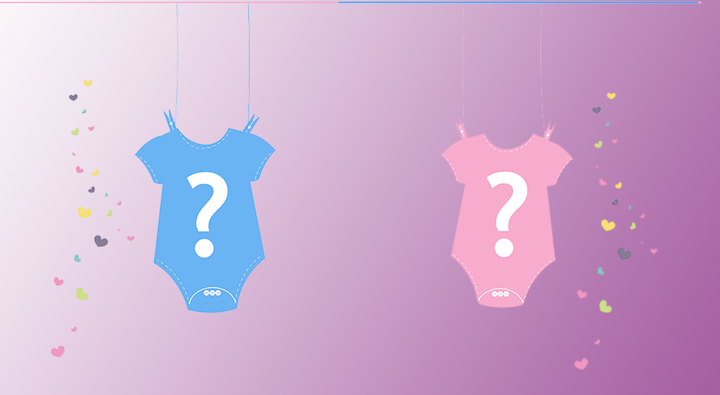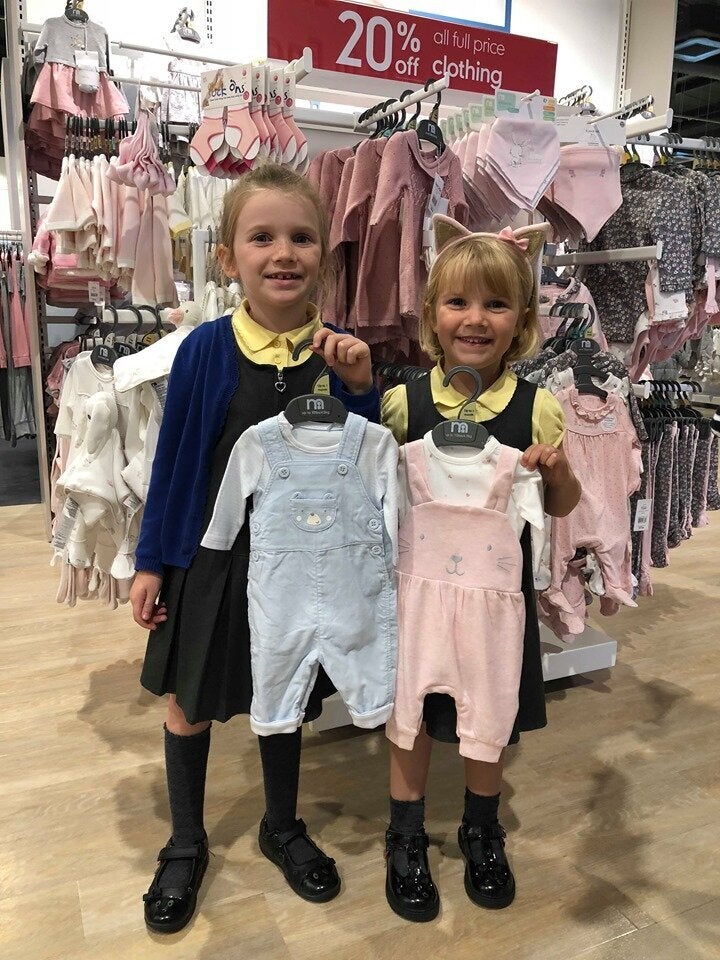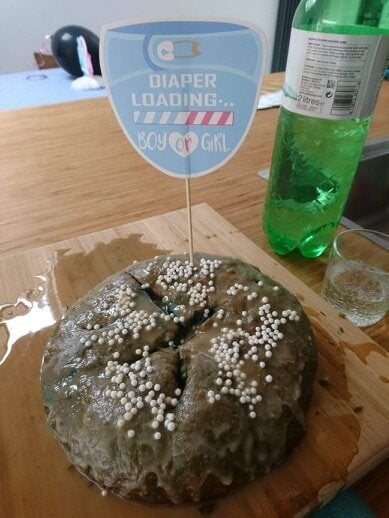
If you haven’t been to a gender reveal party, you’ll probably know someone who has. What started as a phenomenon in the US, just over a decade ago, has slowly trickled into British culture – and these celebrations seem to be growing.
The parties follow a similar format, revealing the sex of an unborn baby through the colours pink or blue. It might be a balloon, a cake filling, or even a smoke cannon. And, as popularity has increased, so too has the extent of these reveals. All over the world, we’ve seen gender reveal lasagnes, fireworks, a powder-filled baseball, a private plane and even a ‘Stranger Things’ theme – prompting Brits to adopt the idea when they find out they’re expecting.
Knowing the sex of your baby is, of course, important for parents-to-be. But is celebrating gender in the way these parties do – blue for boys, pink for girls – a little... outdated?
Parental views about gender stereotypes in the UK are changing, giving rise to a more relaxed attitudes to gender. Research by the Fawcett Society shows six in 10 parents worry about gender stereotyping when shopping for their kids. There’s such widespread concern about “pink for girls, blue for boys” marketing, in fact, that a commission is currently examining these stereotypes in early childhood. It begs the question: if we don’t want pink and blue stereotypes as kids grow up – why do we want them before birth?
Even the mother accredited with throwing the world’s first ever gender reveal party, Jenna Karvunidis, 39, recently said she has since realised a child’s gender “is not the most important factor”. And with more parents openly choosing to raise their child gender fluid – or gender creative, as mum Kyl Myers, told HuffPost UK in 2018 – it seems logical to assume there may no longer be a place for these parties.
Why, then, are they still in their prime? This year, retailers such as Aldi and John Lewis launched their own ‘gender reveal party kits’ for parents. An Aldi spokeswoman told HuffPost UK the store decided to sell its £2.49 kit, containing pink and blue confetti, in the wake of celebrities such as Kate Hudson, Jessica Alba and the Kardashians throwing such parties. The kits were only available for a limited time, however, and there aren’t current plans to re-stock them.
But in Bristol, Superstars Fireworks started selling £35 boxes of pink or blue fireworks this year. “It’s definitely a growing thing,” said owner Janis Osborne. “We had them in for a trial and sold a few, and then people started asking for them. They’ve been a really good seller for us.″
“Gender reveal fireworks have been a really good seller for us.”
Bakeries such as Lola’s Cupcakes and Cakes Today offer their take on ‘hidden’ party cakes, too – filling sponge with blue or pink buttercream to indicate the sex of a baby. Laura Omotosho, owner of the Cinnamon Cake Company in London, has noticed an increase in such orders. “I’ve had a couple of ‘gender reveal’ cake orders this year after never having any before,” she tells us.
One was a blue sponge cake covered in white icing, and the other was a cake filled with pink sweets. For the blue-and-white cake order, Omotosho says the baby’s grandmother was the only one who knew the results. “She was so happy to be able to talk to someone about it,” she says.
Brits who throw gender reveal parties often proudly share the results on social media, with some of the results going viral – like the couple in Scotland who opted for a gender reveal “volcano”.
Vicki McFee, from Cornwall, tells HuffPost UK she held a gender reveal party for her third child and enjoyed the process – acknowledging that the “pink and blue” concept was only for the purpose of the reveal. She’d left the sex of her first two children a surprise, but when one of her daughters said she wanted a baby sister when McFee was pregnant with her third child, they thought it was best to find out in order to give her time to “mentally adjust”.

At the scan, they asked the sonographer to write down the sex of the baby on a piece of paper. “We took the girls to Mothercare where, together, they chose an outfit for boy and one for a girl,” she says. “We handed both to the cashier along with the note from the sonographer and asked her to secretly wrap the suitable outfit. I said to the girls: ‘Of course, we know anyone can wear any colour, but for the purpose of this exercise it might be easier if we stick to pink and blue’.”
They then drove to her mum’s house so the girls could unwrap the parcel and reveal to the family what colour outfit was inside. “By my daughter doing the reveal – alongside her sister – it took the onus off what it was actually going to be, as she was excited to be the one to reveal to everyone, even me!” McFee says. “Luckily they are old enough now to understand that it’s an old-fashioned concept to dress girls in pink and boys in blue so I didn’t see any harm.”
Others are a little more sceptical, perhaps. “So depressing,” someone shared on Twitter, discussing gender reveals. “Setting up the pink and blue stereotypes before the poor child even draws breath.” While another described them as “another opportunity to sell people unnecessary shit”.
Some people highlighted other issues of the parties. One person wrote: “Friend of a friend had one, it wasn’t the sex she wanted and she had to take herself off to cry”. Another said a friend also hosted one, only to later find out they’d been told the wrong sex.
Karima Eznagui, from east London, has grown more sceptical of the parties. She held one at her home in March – but has since thought more about the impact of the pink/blue divide. Eznagui knew her baby was going to be a boy, but wanted to surprise close family and friends. She bought a big black balloon, in which you hide the confetti of the right colour. She also tried to bake a cake with blue sponge – but the food colouring didn’t work and it went green.

The purpose of the party, says Eznagui, was to have a simple, family-orientated get together, with family, friends and neighbours. “We didn’t want a crazy reveal with fireworks and stuff,” she tells HuffPost UK.
When she bought the balloon pack – with optional pink or blue confetti – she says she “didn’t even think about” the impact of gender stereotypes. But since having her son, she’s considered it a lot more. “I don’t go as far as to dress him in dresses, but I do put him in pink,” she says. “I bought him a pink pair of shorts and I saw a Barbie in a wheelchair and said to my husband I was considering buying him a doll for Christmas.
“I didn’t really give it a second thought at the time, but now I want to be able to share the clothes with another child, if we have one, especially if it’s a girl.”
Whether people agree or not, gender reveal parties are still happening in Britain. And with UK retailers selling the products needed for parents-to-be to create the celebrations at home – and others being influenced by the viral videos on social media – they might well continue. But for how long? Only time will tell.